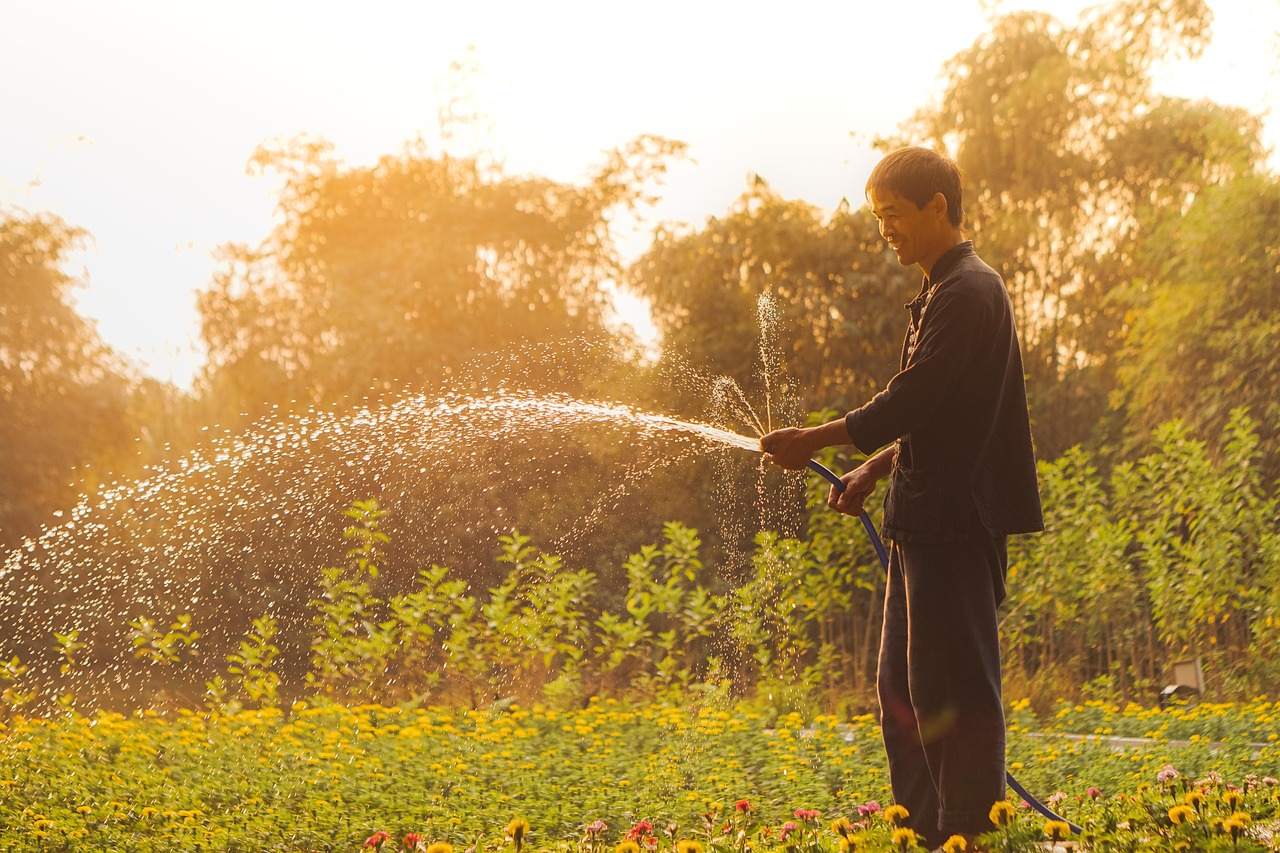Fusion gardening is an innovative approach that combines traditional gardening techniques with modern eco-friendly designs. This method emphasizes sustainable practices while integrating contemporary aesthetics to create beautiful, functional green spaces that respect nature.
Understanding Fusion Gardening

Gardening has evolved significantly over the years. Traditional methods focused primarily on agricultural practices and the cultivation of plants for food. However, as society has changed, so have our approaches to gardening. The concept of fusion gardening emerges from the need to create aesthetically pleasing environments that also promote sustainability. By blending age-old gardening techniques with modern design principles, fusion gardening offers a holistic approach to creating green spaces.
At its core, fusion gardening is about balance. It seeks to harmonize the natural elements of gardening with the advancements of contemporary design. This includes the use of eco-friendly materials, native plants, and innovative technologies that improve water efficiency and soil health. Gardeners are now more aware of their environmental impact and are looking for ways to make their outdoor spaces both beautiful and sustainable.
One major aspect of fusion gardening is the incorporation of native plants. These plants are adapted to local climates and require less water, making them more sustainable choices for gardeners. By using native species, gardeners can also support local wildlife, such as pollinators and birds, which are essential for maintaining ecological balance.
Modern design elements play a crucial role in fusion gardening as well. Clean lines, structured layouts, and the strategic use of color can transform a garden into a contemporary masterpiece. This aesthetic appeal not only enhances the visual experience but also creates functional spaces for relaxation and recreation.
Key Principles of Fusion Gardening
There are several key principles that guide fusion gardening practices. Understanding these principles can help gardeners create more effective and sustainable gardens.
- Sustainability: Fusion gardening focuses on sustainable practices that reduce waste and conserve resources.
- Diversity: Incorporating a variety of plants promotes biodiversity, which is crucial for a healthy ecosystem.
- Water Efficiency: Utilizing modern irrigation techniques helps to minimize water usage while ensuring plants receive adequate hydration.
- Soil Health: Maintaining soil health through organic practices is vital for plant growth and sustainability.
- Aesthetic Appeal: Blending traditional and modern designs enhances the overall beauty of the garden.
The Role of Technology in Fusion Gardening
Technology also plays a significant role in fusion gardening. Smart gardening tools and applications allow gardeners to monitor their plants’ needs more effectively. For instance, soil moisture sensors can help in determining when to water, ensuring that plants receive just the right amount of hydration without wastage.
Furthermore, technology can aid in planning and designing gardens. Various software programs enable users to visualize their garden layouts, experiment with different plant combinations, and even assess sunlight exposure throughout the day. This planning phase is crucial in achieving a harmonious blend of traditional and modern elements in garden design.
| Aspect | Traditional Gardening | Fusion Gardening |
|---|---|---|
| Plant Choice | Non-native species | Native species |
| Design | Functional | Aesthetic and functional |
| Water Usage | High | Low |
| Soil Management | Conventional fertilizers | Organic practices |
By embracing both traditional wisdom and modern advancements, fusion gardening presents an exciting opportunity for gardeners. It encourages creativity while fostering environmental responsibility. As we continue to explore this unique gardening approach, it is clear that the future of our gardens can be both beautiful and sustainable.</
Benefits of Fusion Gardening
Fusion gardening offers numerous benefits that extend beyond mere aesthetics. By combining traditional and modern techniques, gardeners can create spaces that are not only visually appealing but also environmentally friendly and sustainable. Here are some of the key benefits associated with this innovative approach:
- Enhanced Biodiversity: Fusion gardening promotes the use of native plants, which supports local wildlife and increases biodiversity. This creates a thriving ecosystem that benefits both plants and animals.
- Reduced Resource Consumption: By employing water-efficient practices and organic gardening methods, fusion gardening minimizes the amount of resources used. This helps to conserve water and reduce chemical runoff into local waterways.
- Improved Soil Health: Utilizing organic practices enhances soil structure and fertility. Healthy soil is essential for plant growth and contributes to the overall health of the garden.
- Beautiful Design: Fusion gardening combines aesthetic appeal with functionality, resulting in gardens that are both beautiful and practical. The incorporation of modern design elements can transform outdoor spaces into stunning retreats.
- Community Engagement: This approach encourages community involvement through shared gardening spaces. Community gardens foster social interaction and promote environmental awareness among residents.
Choosing the Right Plants
Selecting the right plants is crucial in fusion gardening. The goal is to create a harmonious blend of traditional and modern elements while ensuring that the chosen plants thrive in their environment. Here are some guidelines for selecting plants:
- Opt for Native Species: Native plants are well-suited to local climates and soil conditions. They require less maintenance and are more resilient to pests and diseases.
- Diversity is Key: Incorporate a variety of plant types, including flowers, shrubs, and trees, to create a balanced ecosystem. This diversity supports pollinators and other beneficial insects.
- Consider Seasonal Interest: Choose plants that provide visual interest throughout the seasons. This can include spring blooms, summer foliage, autumn colors, and winter structure.
- Assess Growth Habits: Pay attention to the growth habits of plants. Select a mix of tall, medium, and low-growing plants to create layers and depth in the garden.
- Personal Preference: Ultimately, choose plants that resonate with your personal style and preferences. A garden should reflect the gardener’s personality and vision.
Designing Your Fusion Garden
The design phase is where fusion gardening truly comes to life. It requires careful planning to achieve a seamless blend of traditional and modern elements. Here are some steps to consider when designing your fusion garden:
- Assess Space: Begin by evaluating the available space. Consider factors such as sunlight exposure, soil type, and existing structures that may influence your design choices.
- Create Zones: Divide your garden into different zones based on function. For example, designate areas for relaxation, vegetable gardening, or ornamental planting.
- Incorporate Hardscaping: Use pathways, patios, or stone features to create structure and guide movement through the garden. Hardscaping can enhance both aesthetic appeal and functionality.
- Add Water Features: Consider incorporating water features such as ponds or rain gardens. These not only serve as focal points but also support local wildlife and contribute to biodiversity.
- Embrace Vertical Gardening: Utilize vertical space by incorporating trellises or wall planters. This approach maximizes planting area while adding visual interest.
Maintenance Practices for Fusion Gardens
To ensure the longevity and health of a fusion garden, proper maintenance practices are essential. Here are some key maintenance tips:
- Regular Monitoring: Keep an eye on plant health, soil moisture levels, and pest activity. Regular checks can help identify potential issues before they escalate.
- Mulching: Apply organic mulch around plants to retain moisture, suppress weeds, and improve soil health as it breaks down over time.
- Sustainable Pest Management: Use integrated pest management (IPM) techniques to control pests without relying on harmful chemicals. Encourage natural predators such as ladybugs and birds.
- Seasonal Clean-Up: At the end of each season, remove dead or diseased plant material. This helps prevent disease spread and prepares the garden for new growth.
- Soil Testing: Periodically test soil health to ensure it meets the needs of the plants. Amendments may be necessary to maintain optimal growing conditions.
By understanding these aspects of fusion gardening, gardeners can create vibrant spaces that reflect their values while contributing positively to the environment. The combination of traditional knowledge with modern techniques opens up endless possibilities for innovative gardening solutions.

Innovative Tools and Techniques in Fusion Gardening
As fusion gardening continues to gain popularity, various innovative tools and techniques are emerging. These advancements help gardeners implement eco-friendly practices while enhancing their gardening experience. Here are some of the notable tools and methods that support fusion gardening:
Smart Irrigation Systems
Water management is a critical aspect of gardening, especially in sustainable practices. Smart irrigation systems utilize technology to optimize water usage. These systems can automatically adjust watering schedules based on weather conditions and soil moisture levels. This not only conserves water but also ensures plants receive the right amount of moisture.
- Soil Moisture Sensors: These devices measure the moisture content of the soil and communicate with the irrigation system to provide precise watering.
- Weather-Based Controllers: These controllers adjust watering schedules using real-time weather data, preventing overwatering during rainy periods.
Vertical Gardening Solutions
Vertical gardening is an effective way to maximize space, especially in urban settings. This technique involves growing plants upward instead of outward, allowing for efficient use of limited space. Various products facilitate vertical gardening:
- Wall Planters: These planters can be attached to walls, creating a living wall filled with plants.
- Trellises and Arbors: Structures that support climbing plants can enhance vertical growth while adding design elements to the garden.
- Pocket Planters: Fabric or felt planters with pockets allow for easy vertical planting in confined spaces.
Compost Systems
Creating a compost system is an essential practice in fusion gardening. Composting turns kitchen scraps and yard waste into nutrient-rich soil amendments. This practice not only reduces waste but also enriches the garden soil naturally. Here are some options for composting:
- Bokashi Composting: This method involves fermenting organic waste using beneficial microbes, making it suitable for small spaces.
- Tumbling Composters: These enclosed systems make it easier to turn compost, speeding up the decomposition process.
- Worm Composting (Vermicomposting): Utilizing worms to break down organic matter produces high-quality compost known as worm castings.
Eco-Friendly Pest Control Solutions
Maintaining plant health without relying on harmful chemicals is a fundamental principle of fusion gardening. Several eco-friendly pest control solutions can help manage common garden pests:
- Naturally Derived Insecticides: Products made from plant extracts, such as neem oil or insecticidal soap, can effectively control pests without harming beneficial insects.
- Diatomaceous Earth: This natural substance can be sprinkled around plants to deter crawling insects by damaging their exoskeletons.
- Companion Planting: Certain plants can repel pests when grown together. For example, marigolds are known to deter nematodes and other harmful insects.
Cultivating a Community through Fusion Gardening

Fusion gardening is not just about individual gardens; it also promotes community engagement and collaboration. By creating community gardens, residents can come together to share resources, knowledge, and passion for sustainable gardening.
Benefits of Community Gardens
Community gardens offer numerous advantages that extend beyond the act of gardening itself:
- Social Connections: Community gardens foster relationships among neighbors, creating a sense of belonging and unity.
- Educational Opportunities: These gardens can serve as outdoor classrooms, teaching participants about sustainable practices and healthy eating.
- Access to Fresh Produce: Community members can grow their own fruits and vegetables, promoting better nutrition and food security.
- Environmental Awareness: Working together in a community garden raises awareness about environmental issues and encourages sustainable practices.
Getting Involved in a Community Garden
If you are interested in participating in or starting a community garden, consider the following steps:
- Research Local Initiatives: Look for existing community gardens in your area. Many cities have organizations that support these initiatives.
- Gather Support: Connect with like-minded individuals who share an interest in gardening and sustainable practices.
- Select a Suitable Location: Find an accessible space that receives adequate sunlight, has good soil, and is convenient for community members.
- Create a Plan: Develop a plan outlining garden layouts, shared responsibilities, and rules for participation.
- Launch the Garden: Organize a community event to kick off the garden project, inviting local residents to join in the fun of planting and building.
The collaborative spirit of fusion gardening enhances not only individual gardens but also strengthens community ties. By working together, communities can cultivate beautiful green spaces that reflect shared values and promote sustainability.
Exploring Future Trends in Fusion Gardening

As the world becomes more aware of environmental issues and the importance of sustainability, fusion gardening is likely to evolve and adapt to new trends. Several emerging practices and concepts are shaping the future of this gardening approach:
Integration of Technology
The role of technology in gardening is expanding beyond smart irrigation systems. Innovations such as drones for monitoring plant health, apps for garden management, and even artificial intelligence for design recommendations are becoming more prevalent. These technologies can assist gardeners in making informed decisions while reducing labor and resource consumption.
- Garden Management Apps: These applications allow gardeners to track plant growth, monitor soil conditions, and manage watering schedules efficiently.
- Drones: Drones equipped with cameras can help assess garden health from above, identifying areas that need attention.
- AI Design Tools: Advanced software can provide personalized garden designs based on preferences, local climate, and plant compatibility.
Urban Fusion Gardening
As urbanization continues to rise, fusion gardening will become increasingly vital in city landscapes. Urban fusion gardening focuses on creating green spaces in high-density areas. This may include rooftop gardens, balcony planters, and vertical gardening solutions that not only beautify but also improve air quality and biodiversity.
- Rooftop Gardens: Utilizing rooftop spaces for gardening helps combat urban heat islands while providing fresh produce.
- Community Green Spaces: Transforming vacant lots into community gardens can enhance neighborhoods, promote social interaction, and provide educational opportunities.
Sustainable Practices and Resilience
Climate change presents challenges for all gardeners. Fusion gardening practices can promote resilience by selecting plants that are adaptable to changing climates and employing methods that conserve resources. As gardeners face increased weather variability, the adaptation of practices will be crucial.
- Permaculture: Integrating permaculture principles with fusion gardening can create systems that mimic natural ecosystems, improving sustainability.
- Climate-Resilient Plants: Focusing on plants that are drought-resistant or tolerant of extreme temperatures will help maintain garden health in adverse conditions.
Final Thoughts
Fusion gardening represents a dynamic blend of traditional knowledge and modern innovations. By merging these two worlds, gardeners can create beautiful, sustainable spaces that reflect their values and contribute positively to the environment. The benefits of fusion gardening extend beyond aesthetics; they encompass biodiversity, resource conservation, community engagement, and resilience against climate challenges.
The journey into fusion gardening is not just about planting seeds; it is about cultivating a mindset that values sustainability and innovation. As individuals and communities embrace this approach, they pave the way for a greener future. Fusion gardening empowers people to take control of their environments while fostering connections to nature and each other.
Ultimately, whether you are an experienced gardener or just starting, fusion gardening offers endless opportunities for creativity and growth. By combining traditional techniques with modern eco-friendly design, you can transform your space into a thriving oasis that benefits both you and the planet.
